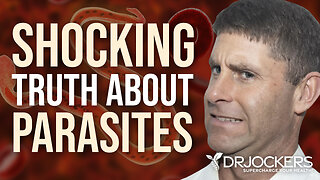Diabetic Gangrene: Symptoms, Causes & Treatment – Dr.Berg On Diabetic Foot
I answer the question, why do some diabetics get gangrene?
Timestamps:
0:00 Why do some diabetics get gangrene?
0:30 The reason the tissue is dying is because of exposure to way too much sugar
2:50 I explain what you can do for gangrene
In this video, I answer the question of why do some diabetics get gangrene while others don’t?
With gangrene, the tissue in the toes or foot, and sometimes the hand, starts turning black, yellow, red, and sometimes even a shade of green. The word gangrene is derived from the Latin word that means putrefaction, or dead or dying tissue. And the reason the tissue is dying is that it’s being exposed to way too much sugar.
When you expose your vascular system to too much glucose, it gets damaged. You get massive oxidation, creating free radicals. You experience hemorrhaging clotting and a thickened stiffened vascular system. All of this causes a healing response; an inflammatory response, and impairs the blood flow to your tissues and nerves.
The lining of your vascular system is called the endothelial layer. It doesn’t require insulin to transport glucose into the cells. This means if you have insulin resistance, you won’t have the resistance in the endothelial layer. If there’s too much glucose it will be driven right into your tissues, which is why so much damage is created.
If you look at insulin resistance as a protective mechanism that prevents too much glucose and insulin from going into the tissues, it’s easy to see why tissues that don’t need insulin to get battered. Brain tissue is another example, along with red blood cells. When you get an A1C test, what’s measured is a level of exposure to sugar of the red blood cells, to determine whether or not you’re a diabetic.
The more sugar in your blood, the more vascular problems you’ll have. It’ll stop both the nutrition and oxygen to your tissues, leading to gangrene. You may get a combination of gangrene, ulcers, and nerve damage.
But here’s what you can do. The most important thing is to avoid it in the first place, by not consuming so much sugar. Do keto and intermittent fasting.
If you already have this condition there are a couple of things you can do depending on how severe it is. Believe it or not, in 2004 the FDA approved maggot therapy. Maggots are put into skin ulcers to clean up the dead tissue, and it’s very effective because it disinfects the area and stimulates healing. The maggots actually release enzymes and a broad-spectrum antibiotic.
Of course, you also want to change your diet to lower your sugar intake.
Now you know the answer to why do some diabetics get gangrene?
Dr. Eric Berg DC Bio:
Dr. Berg, age 55, is a chiropractor who specializes in Healthy Ketosis & Intermittent Fasting. He is the author of the best-selling book The Healthy Keto Plan, and is the Director of Dr. Berg Nutritionals. He no longer practices, but focuses on health education through social media.
Follow us on FACEBOOK: fb.me/DrEricBerg
Send a Message to his team: m.me/DrEricBerg
ABOUT DR. BERG: https://bit.ly/39LCWg8
Disclaimer: Dr. Eric Berg received his Doctor of Chiropractic degree from Palmer College of Chiropractic in 1988. His use of “doctor” or “Dr.” in relation to himself solely refers to that degree. Dr. Berg is a licensed chiropractor in Virginia, California, and Louisiana, but he no longer practices chiropractic in any state and does not see patients so he can focus on educating people as a full-time activity, yet he maintains an active license. This video is for general informational purposes only. It should not be used to self-diagnose and it is not a substitute for a medical exam, cure, treatment, diagnosis, and prescription or recommendation. It does not create a doctor-patient relationship between Dr. Berg and you. You should not make any change in your health regimen or diet before first consulting a physician and obtaining a medical exam, diagnosis, and recommendation. Always seek the advice of a physician or other qualified health provider with any questions you may have regarding a medical condition. The Health & Wellness, Dr. Berg Nutritionals, and Dr. Eric Berg, D.C. are not liable or responsible for any advice, course of treatment, diagnosis or any other information, services, or product you obtain through this video or site.
Thanks for watching!
Give this at-home toenail fungus treatment a try!
-
 5:35
5:35
Dr. Eric Berg
7 days agoYOUR BODY IS TRYING TO WARN YOU!!
5.33K14 -
 1:38:28
1:38:28
The Quartering
2 hours agoWW3 Countdown, Russian Warships Arrive, Supreme Court Controversy, Hit List On Americans By Ukraine
10.2K16 -
 1:22:35
1:22:35
Redacted News
4 hours agoGet Ready! They are PLANNING something BIG before the Trump / Biden CNN debate | Redacted Live
54.2K143 -
 21:39
21:39
Dr David Jockers
1 hour agoThe Shocking Truth About Parasites and How to Get Rid of Them!
2.98K5 -
 1:01:42
1:01:42
In The Litter Box w/ Jewels & Catturd
21 hours agoBiden Conviction Just A Distraction | In the Litter Box w/ Jewels & Catturd - Ep. 585 - 6/12/2024
35.7K21 -
 1:03:45
1:03:45
Barstool Gametime
6 hours agoNicky Smokes & Ohio's Tate Face Off For Game 3 Of The NBA Finals In NBA 2k
15.8K1 -
 53:32
53:32
Tate Speech by Andrew Tate
8 hours agoEMERGENCY MEETING EPISODE 56 - CRYPTO CULTURE
276K662 -
 1:13:49
1:13:49
vivafrei
19 hours agoLive Interview with Russell Brand - From Blue Pill to Red Pill, & Everything In Between! viva Frei
79.1K52 -
 1:32:42
1:32:42
Mally_Mouse
3 hours agoLet's Talk About It - LIVE
22K10 -
 DVR
DVR
Film Threat
22 hours agoTHE ACOLYTE EPISODE 3 BREAKS STAR WARS | Hollywood on the Rocks
16.5K3